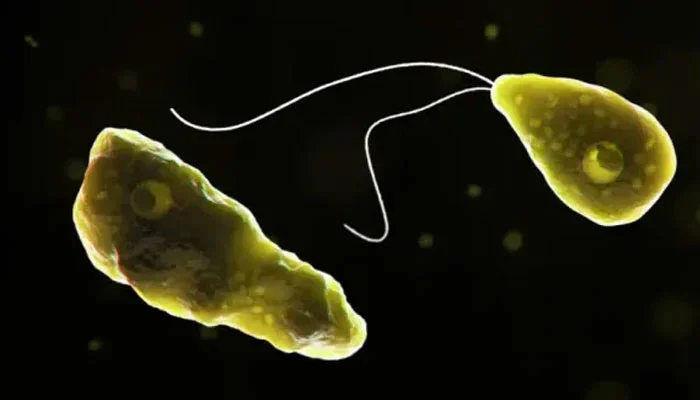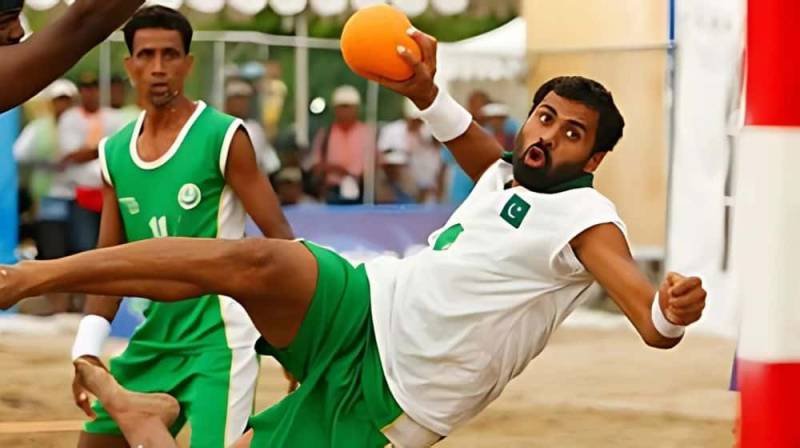Tragedy Strikes Karachi: 17-Year-Old Dies from Brain-Eating Amoeba as Naegleria Fowleri Claims Fourth Life in 2025
By Shawwala Aslam | June 28, 2025
Karachi, Pakistan — A 17-year-old resident of North Karachi has died after testing positive for the brain-eating amoeba, Naegleria fowleri, marking the fourth fatality from the rare but deadly infection in Pakistan this year, according to a statement from the Sindh Health Department on Saturday.
The teenager had tested positive for the infection on June 27 and tragically passed away the following day, June 28. Officials confirmed that he had no history of swimming or other water-based recreational activities, prompting health experts to revisit concerns about the city’s public water safety measures.
The death has once again brought the spotlight on Pakistan’s recurring struggle with Naegleria fowleri, a microscopic organism that thrives in warm, freshwater environments and causes a brain infection known as Primary Amoebic Meningoencephalitis (PAM), which is almost always fatal.
A Growing Health Concern in Karachi
This recent case adds to the alarming tally of Naegleria-related deaths in the province, highlighting the persistent threat of this organism, particularly during the summer months when temperatures soar and water usage increases.
In March 2025, a 36-year-old woman from the Gulshan-e-Iqbal area in Karachi was reported as the year’s first fatality from the amoeba. Similar to the latest case, she too had no record of visiting any swimming pools or natural water bodies. Her only known contact with water was while performing ablution at home — a daily religious practice that involves cleansing parts of the body with water.
These cases emphasize the growing danger posed by Naegleria fowleri in urban settings, especially where water storage and purification practices are inadequate or neglected.
What is Naegleria Fowleri?
Naegleria fowleri is an amoeba that lives in soil and warm freshwater, such as lakes, rivers, and hot springs. It can also survive in inadequately chlorinated swimming pools and water tanks. The organism is not harmful if swallowed but can cause severe damage if it enters the body through the nasal passage.
Once inside the nose, the amoeba travels up the olfactory nerve to the brain, where it begins to destroy brain tissue. The resulting condition, PAM, leads to rapid deterioration of neurological functions, coma, and usually death within days.
Though extremely rare, the disease’s fatality rate is more than 97 percent, and most patients succumb within a week of showing symptoms.
Symptoms and Rapid Progression
Health experts describe the early symptoms of Naegleria fowleri infection as similar to bacterial meningitis, which makes diagnosis challenging in the early stages. Symptoms typically appear one to nine days after exposure and include:
-
Severe frontal headache
-
Fever
-
Nausea and vomiting
-
Stiff neck
-
Seizures
-
Altered mental status
-
Hallucinations
-
Coma
Once the symptoms appear, the disease progresses rapidly. In most cases, death occurs within five to seven days. Very few individuals globally have survived PAM, and only when diagnosed extremely early and treated with a combination of powerful antifungal and antiparasitic drugs.
Four Deaths in 2025 — What Do We Know So Far?
With the recent death of the 17-year-old boy, Karachi has now reported four deaths from Naegleria fowleri in 2025. The first three were:
-
March 2025 – A 36-year-old woman from Gulshan-e-Iqbal, who had only been exposed to water during ablution.
-
May 2025 – A 24-year-old university student who had visited a local swimming facility.
-
June 2025 – A 42-year-old man from Malir who was reportedly exposed through domestic water usage.
Each case underscores a common pattern: exposure to untreated or poorly treated water. The fact that even ablution — a routine and religious practice — can lead to infection is particularly alarming in a predominantly Muslim country where this is a daily ritual for millions.
Previous Year’s Toll and Ongoing Concerns
Pakistan reported five Naegleria-related deaths in 2024. Four of those were in Karachi, and one occurred in Hyderabad. In all cases, water sources were suspected, but definitive points of exposure were difficult to trace due to a lack of regular monitoring and documentation.
Experts warn that the actual number of infections may be higher, but many go undiagnosed or misdiagnosed due to the rapid progression and symptom overlap with other forms of meningitis.
The Science Behind Naegleria’s Lethality
What makes Naegleria fowleri so deadly is its ability to destroy brain tissue at a rapid pace. The amoeba feeds on brain cells and triggers massive inflammation and brain swelling. Unlike bacterial or viral infections, there is no vaccine or universally effective treatment.
Naegleria is also remarkably resistant to common environmental conditions. It thrives in temperatures between 25°C to 45°C and remains resilient in stagnant or poorly chlorinated water. In cities like Karachi, where temperatures often exceed 40°C in summer, and where chlorination standards vary widely, the organism finds the perfect breeding ground.
Prevention: The Only Reliable Defense
Since there is no effective cure for PAM, prevention remains the only strategy to combat Naegleria fowleri. Public health officials emphasize the following safety measures:
-
Proper Chlorination: Ensure all domestic water storage tanks (underground and overhead) are cleaned regularly and disinfected with chlorine tablets.
-
Boiling Water: Water used for ablution, especially during summer, should be boiled or filtered.
-
Avoid Nasal Exposure: Avoid letting water enter the nose during ablution, bathing, or swimming.
-
Swimming Pool Hygiene: Only swim in pools that are regularly cleaned and chlorinated.
-
Use of Nose Clips: While swimming or during water-related activities, use nose clips to prevent water from entering the nasal cavity.
Government’s Role Under Scrutiny
Public outcry is growing as citizens demand better monitoring and enforcement of water safety regulations. Many question why, despite annual fatalities, the authorities have failed to implement strict chlorination protocols across residential areas.
The Sindh Health Department has formed task forces in the past to inspect water filtration plants, swimming pools, and community tanks, but such efforts often fizzle out after temporary media attention.
In 2023, a plan was proposed to distribute free chlorine tablets and issue guidelines for water tank maintenance. However, implementation remained limited due to logistical constraints and lack of awareness.
This year, following the first Naegleria fatality in March, the Karachi Water and Sewerage Corporation (KWSC) issued an advisory urging citizens to chlorinate water and clean tanks. But experts say such advisories need to be backed by ground-level enforcement and city-wide monitoring.
Expert Opinions and Public Response
Dr. Faisal Mehmood, a leading infectious disease specialist at Aga Khan University Hospital, stresses the importance of public awareness:
“The biggest issue is that most people don’t think Naegleria affects them. But the amoeba doesn’t care about age, gender, or background. It can infect anyone who lets contaminated water into their nose.”
Community health campaigns, particularly in religious institutions and schools, are being urged to include information about Naegleria prevention, especially as daily ablution is a key risk factor.
Climate Change: An Aggravating Factor
Experts also point to climate change as a contributing factor in the rise of Naegleria cases. With urban heat islands intensifying and freshwater sources getting warmer, the organism is more likely to thrive.
Furthermore, erratic rainfall patterns and rising temperatures can cause water scarcity, forcing households to rely on stored water that may not be adequately treated. Combined with poor urban infrastructure and aging water supply systems, this creates a high-risk environment.
International Comparisons and Lessons Learned
Globally, Naegleria fowleri is rare but has been reported in several countries, including the United States, Australia, and India. In the U.S., the Centers for Disease Control and Prevention (CDC) tracks PAM cases and issues seasonal warnings.
The CDC also provides water chlorination guidelines for public swimming facilities and municipal water systems. Such rigorous documentation and early intervention protocols have helped keep the number of fatalities extremely low compared to countries with limited resources.
Pakistan can benefit from adopting similar frameworks — developing real-time tracking systems, mandating water safety inspections, and creating emergency response units trained in detecting and managing Naegleria cases.
Conclusion: A Call to Action
The tragic death of a 17-year-old boy in Karachi is not just an isolated incident; it is a stark reminder of systemic negligence in water safety and public health preparedness. With four deaths already reported in 2025, and summer far from over, immediate action is needed.
Municipal authorities must take aggressive steps to ensure city-wide chlorination, conduct random inspections, and run mass awareness campaigns in schools, mosques, and community centers.
At the same time, citizens must also take personal responsibility — by cleaning their tanks, using chlorine, and avoiding risky practices like allowing untreated water to enter their noses.
Naegleria fowleri may be microscopic, but its threat is monumental. Only through a joint effort of government vigilance and public awareness can Pakistan hope to stop this deadly amoeba in its tracks.
Four Deaths in 2025 — What Do We Know So Far?
With the recent death of the 17-year-old boy, Karachi has now reported four deaths from Naegleria fowleri in 2025. The first three were:
-
March 2025 – A 36-year-old woman from Gulshan-e-Iqbal, who had only been exposed to water during ablution.
-
May 2025 – A 24-year-old university student who had visited a local swimming facility.
-
June 2025 – A 42-year-old man from Malir who was reportedly exposed through domestic water usage.
Each case underscores a common pattern: exposure to untreated or poorly treated water. The fact that even ablution — a routine and religious practice — can lead to infection is particularly alarming in a predominantly Muslim country where this is a daily ritual for millions.
Millie Bobby Brown delights fans with ‘Enola Holmes 3’ update
Read This Articale
Previous Year’s Toll and Ongoing Concerns
Pakistan reported five Naegleria-related deaths in 2024. Four of those were in Karachi, and one occurred in Hyderabad. In all cases, water sources were suspected, but definitive points of exposure were difficult to trace due to a lack of regular monitoring and documentation.
Experts warn that the actual number of infections may be higher, but many go undiagnosed or misdiagnosed due to the rapid progression and symptom overlap with other forms of meningitis.
The Science Behind Naegleria’s Lethality
What makes Naegleria fowleri so deadly is its ability to destroy brain tissue at a rapid pace. The amoeba feeds on brain cells and triggers massive inflammation and brain swelling. Unlike bacterial or viral infections, there is no vaccine or universally effective treatment.
Naegleria is also remarkably resistant to common environmental conditions. It thrives in temperatures between 25°C to 45°C and remains resilient in stagnant or poorly chlorinated water. In cities like Karachi, where temperatures often exceed 40°C in summer, and where chlorination standards vary widely, the organism finds the perfect breeding ground.
Prevention: The Only Reliable Defense
Since there is no effective cure for PAM, prevention remains the only strategy to combat Naegleria fowleri. Public health officials emphasize the following safety measures:
-
Proper Chlorination: Ensure all domestic water storage tanks (underground and overhead) are cleaned regularly and disinfected with chlorine tablets.
-
Boiling Water: Water used for ablution, especially during summer, should be boiled or filtered.
-
Avoid Nasal Exposure: Avoid letting water enter the nose during ablution, bathing, or swimming.
-
Swimming Pool Hygiene: Only swim in pools that are regularly cleaned and chlorinated.
-
Use of Nose Clips: While swimming or during water-related activities, use nose clips to prevent water from entering the nasal cavity.
Government’s Role Under Scrutiny
Public outcry is growing as citizens demand better monitoring and enforcement of water safety regulations. Many question why, despite annual fatalities, the authorities have failed to implement strict chlorination protocols across residential areas.
The Sindh Health Department has formed task forces in the past to inspect water filtration plants, swimming pools, and community tanks, but such efforts often fizzle out after temporary media attention.
In 2023, a plan was proposed to distribute free chlorine tablets and issue guidelines for water tank maintenance. However, implementation remained limited due to logistical constraints and lack of awareness
This year, following the first Naegleria fatality in March, the Karachi Water and Sewerage Corporation (KWSC) issued an advisory urging citizens to chlorinate water and clean tanks. But experts say such advisories need to be backed by ground-level enforcement and city-wide monitoring.
Expert Opinions and Public Response
Dr. Faisal Mehmood, a leading infectious disease specialist at Aga Khan University Hospital, stresses the importance of public awareness:
“The biggest issue is that most people don’t think Naegleria affects them. But the amoeba doesn’t care about age, gender, or background. It can infect anyone who lets contaminated water into their nose.”
Community health campaigns, particularly in religious institutions and schools, are being urged to include information about Naegleria prevention, especially as daily ablution is a key risk factor.
Climate Change: An Aggravating Factor
Experts also point to climate change as a contributing factor in the rise of Naegleria cases. With urban heat islands intensifying and freshwater sources getting warmer, the organism is more likely to thrive.
Furthermore, erratic rainfall patterns and rising temperatures can cause water scarcity, forcing households to rely on stored water that may not be adequately treated. Combined with poor urban infrastructure and aging water supply systems, this creates a high-risk environment.
International Comparisons and Lessons Learned
Globally, Naegleria fowleri is rare but has been reported in several countries, including the United States, Australia, and India. In the U.S., the Centers for Disease Control and Prevention (CDC) tracks PAM cases and issues seasonal warnings.
The CDC also provides water chlorination guidelines for public swimming facilities and municipal water systems. Such rigorous documentation and early intervention protocols have helped keep the number of fatalities extremely low compared to countries with limited resources.
Pakistan can benefit from adopting similar frameworks — developing real-time tracking systems, mandating water safety inspections, and creating emergency response units trained in detecting and managing Naegleria cases.
Conclusion: A Call to Action
The tragic death of a 17-year-old boy in Karachi is not just an isolated incident; it is a stark reminder of systemic negligence in water safety and public health preparedness. With four deaths already reported in 2025, and summer far from over, immediate action is needed.
Municipal authorities must take aggressive steps to ensure city-wide chlorination, conduct random inspections, and run mass awareness campaigns in schools, mosques, and community centers.
At the same time, citizens must also take personal responsibility — by cleaning their tanks, using chlorine, and avoiding risky practices like allowing untreated water to enter their noses.
Naegleria fowleri may be microscopic, but its threat is monumental. Only through a joint effort of government vigilance and public awareness can Pakistan hope to stop this deadly amoeba in its tracks.
Four Deaths in 2025 — What Do We Know So Far?
With the recent death of the 17-year-old boy, Karachi has now reported four deaths from Naegleria fowleri in 2025. The first three were:
-
March 2025 – A 36-year-old woman from Gulshan-e-Iqbal, who had only been exposed to water during ablution.
-
May 2025 – A 24-year-old university student who had visited a local swimming facility.
-
June 2025 – A 42-year-old man from Malir who was reportedly exposed through domestic water usage.
Each case underscores a common pattern: exposure to untreated or poorly treated water. The fact that even ablution — a routine and religious practice — can lead to infection is particularly alarming in a predominantly Muslim country where this is a daily ritual for millions.
Previous Year’s Toll and Ongoing Concerns
Pakistan reported five Naegleria-related deaths in 2024. Four of those were in Karachi, and one occurred in Hyderabad. In all cases, water sources were suspected, but definitive points of exposure were difficult to trace due to a lack of regular monitoring and documentation.
Experts warn that the actual number of infections may be higher, but many go undiagnosed or misdiagnosed due to the rapid progression and symptom overlap with other forms of meningitis.
The Science Behind Naegleria’s Lethality
What makes Naegleria fowleri so deadly is its ability to destroy brain tissue at a rapid pace. The amoeba feeds on brain cells and triggers massive inflammation and brain swelling. Unlike bacterial or viral infections, there is no vaccine or universally effective treatment.
Naegleria is also remarkably resistant to common environmental conditions. It thrives in temperatures between 25°C to 45°C and remains resilient in stagnant or poorly chlorinated water. In cities like Karachi, where temperatures often exceed 40°C in summer, and where chlorination standards vary widely, the organism finds the perfect breeding ground.
Prevention: The Only Reliable Defense
Since there is no effective cure for PAM, prevention remains the only strategy to combat Naegleria fowleri. Public health officials emphasize the following safety measures:
-
Proper Chlorination: Ensure all domestic water storage tanks (underground and overhead) are cleaned regularly and disinfected with chlorine tablets.
-
Boiling Water: Water used for ablution, especially during summer, should be boiled or filtered.
-
Avoid Nasal Exposure: Avoid letting water enter the nose during ablution, bathing, or swimming.
-
Swimming Pool Hygiene: Only swim in pools that are regularly cleaned and chlorinated.
-
Use of Nose Clips: While swimming or during water-related activities, use nose clips to prevent water from entering the nasal cavity.
Government’s Role Under Scrutiny
Public outcry is growing as citizens demand better monitoring and enforcement of water safety regulations. Many question why, despite annual fatalities, the authorities have failed to implement strict chlorination protocols across residential areas.
The Sindh Health Department has formed task forces in the past to inspect water filtration plants, swimming pools, and community tanks, but such efforts often fizzle out after temporary media attention.
In 2023, a plan was proposed to distribute free chlorine tablets and issue guidelines for water tank maintenance. However, implementation remained limited due to logistical constraints and lack of awareness.
This year, following the first Naegleria fatality in March, the Karachi Water and Sewerage Corporation (KWSC) issued an advisory urging citizens to chlorinate water and clean tanks. But experts say such advisories need to be backed by ground-level enforcement and city-wide monitoring.
Expert Opinions and Public Response
Dr. Faisal Mehmood, a leading infectious disease specialist at Aga Khan University Hospital, stresses the importance of public awareness:
“The biggest issue is that most people don’t think Naegleria affects them. But the amoeba doesn’t care about age, gender, or background. It can infect anyone who lets contaminated water into their nose.”
Community health campaigns, particularly in religious institutions and schools, are being urged to include information about Naegleria prevention, especially as daily ablution is a key risk factor.
Climate Change: An Aggravating Factor
Experts also point to climate change as a contributing factor in the rise of Naegleria cases. With urban heat islands intensifying and freshwater sources getting warmer, the organism is more likely to thrive.
Furthermore, erratic rainfall patterns and rising temperatures can cause water scarcity, forcing households to rely on stored water that may not be adequately treated. Combined with poor urban infrastructure and aging water supply systems, this creates a high-risk environment.
International Comparisons and Lessons Learned
Globally, Naegleria fowleri is rare but has been reported in several countries, including the United States, Australia, and India. In the U.S., the Centers for Disease Control and Prevention (CDC) tracks PAM cases and issues seasonal warnings.
The CDC also provides water chlorination guidelines for public swimming facilities and municipal water systems. Such rigorous documentation and early intervention protocols have helped keep the number of fatalities extremely low compared to countries with limited resources.
Pakistan can benefit from adopting similar frameworks — developing real-time tracking systems, mandating water safety inspections, and creating emergency response units trained in detecting and managing Naegleria cases.
Conclusion: A Call to Action
The tragic death of a 17-year-old boy in Karachi is not just an isolated incident; it is a stark reminder of systemic negligence in water safety and public health preparedness. With four deaths already reported in 2025, and summer far from over, immediate action is needed.
Municipal authorities must take aggressive steps to ensure city-wide chlorination, conduct random inspections, and run mass awareness campaigns in schools, mosques, and community centers.
At the same time, citizens must also take personal responsibility — by cleaning their tanks, using chlorine, and avoiding risky practices like allowing untreated water to enter their noses.
Naegleria fowleri may be microscopic, but its threat is monumental. Only through a joint effort of government vigilance and public awareness can Pakistan hope to stop this deadly amoeba in its tracks.




